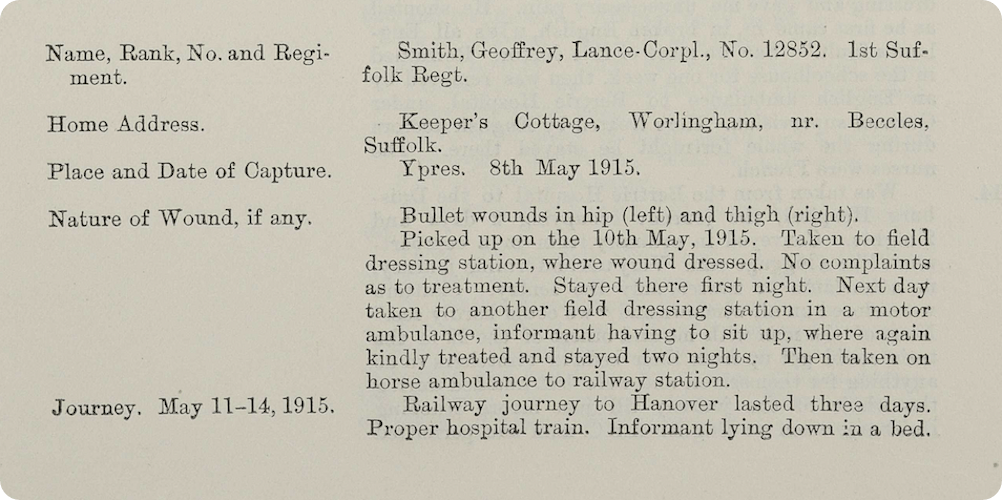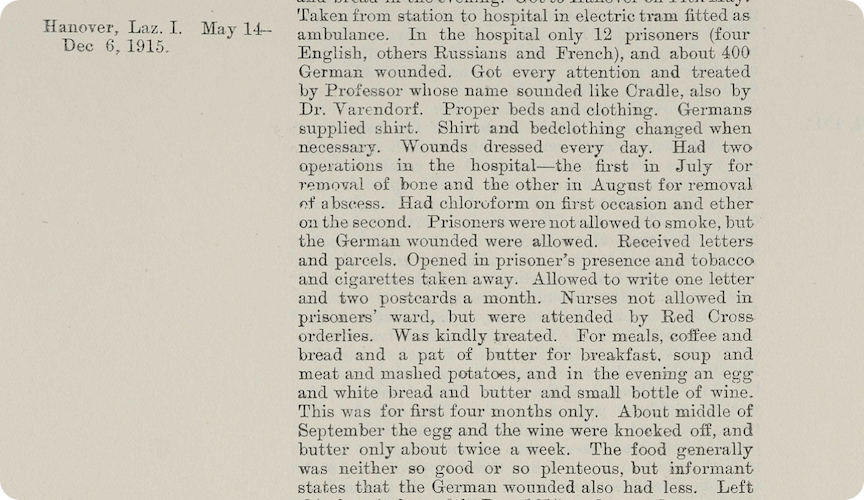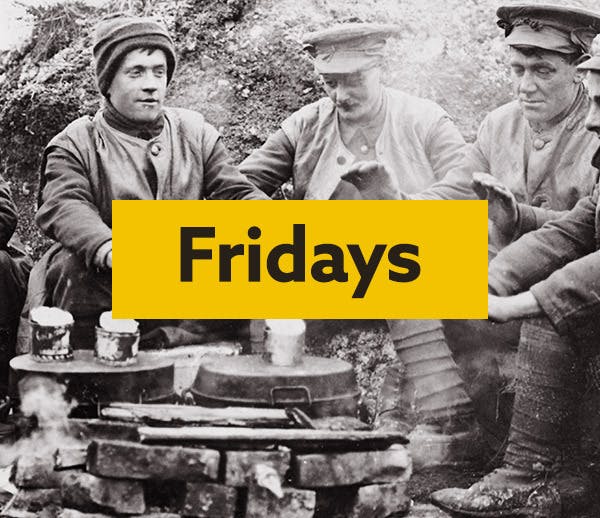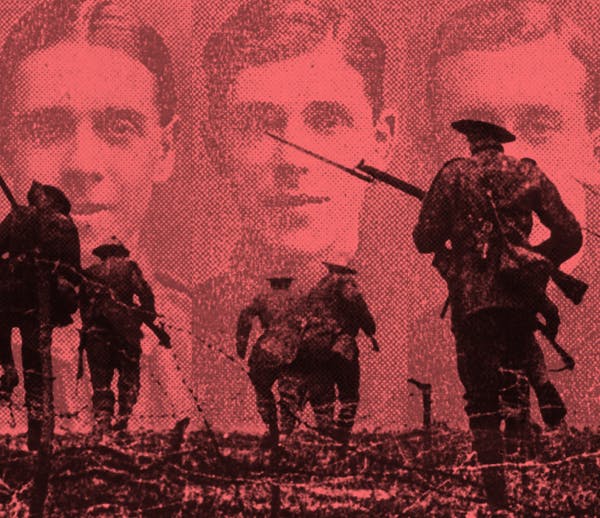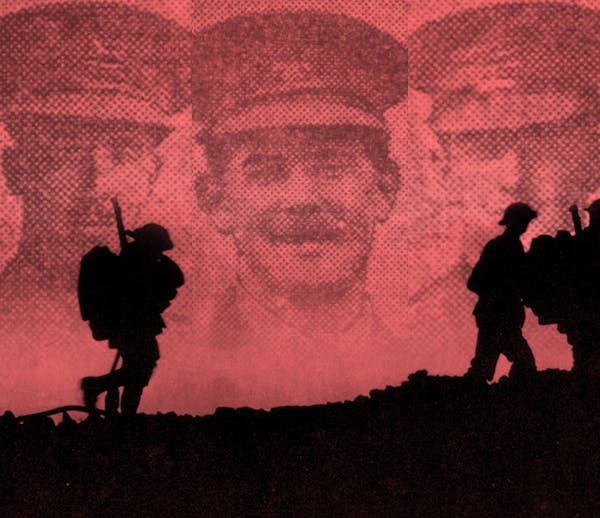A complete guide to our World War 1 Prisoner of War records
6-7 minute read
By The Findmypast Team | November 7, 2023
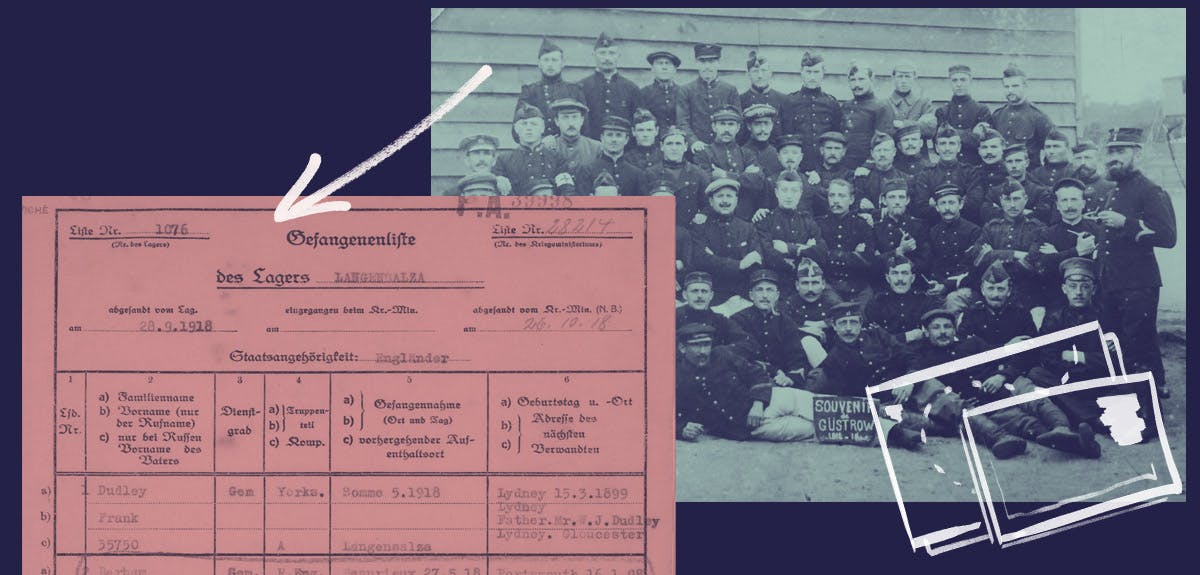
Published in association with The National Archives, these fascinating prisoner of war records offer a detailed glimpse into the experiences of those heroic soldiers who were taken captive during World War 1.
Whether you've got relatives who fought in World War 1, World War 2 or another global conflict, it's so important to honour their stories with acts of remembrance. More than just wearing a poppy each Remembrance Sunday, this means preserving their stories for generations to come.
Using our record collection, learn more about the servicemen who were captured as prisoners of war (POWs) between 1914 and 1918.
Although France had always been Britain’s traditional enemy, not Germany, by August 1914, as a result of the incursion of his armies into Belgium by way of a ‘shortcut’ to Paris, Kaiser Wilhelm of Germany was at war with his cousin, King George V.

Canadian troops march prisoners through a town, c.1918.
What followed was four years of global conflict, in which the Allies fought the alliance of Central Powers across Europe, the Middle East, the Pacific, Africa, and parts of Asia. Around 880,000 British soldiers, and over 2 million Germans, tragically lost their lives.
Our Prisoner of War collection
In 2022, in partnership with The National Archives, Findmypast published four volumes from series FO 383 which, in this case, were correspondence files relating to the imprisonment and internment of members of the armed forces, civilians and merchant seamen – both allied and foreign – during the First World War.
Covering the period from January to June 1915, they make for fascinating reading at a time when men from all armies were being incarcerated in POW camps across the world.
“We are being starved here”
POWs suffered some of the war's most harrowing experiences. One concealed note from an imprisoned trooper to his wife read:
"We get rice water and horse beans only, no solid food, one loaf of bread for six days, several men have been run through with bayonets by the Guard and a large number are being flogged and tied to a barbed wire post for six hours with their toes just touching the ground, they do this without any just cause. We have one blanket and all the men are suffering with itch and dysentery. "
"The guards knock us unmerciful with rifles and sticks, we have hardly anything to wear as our captors took them away. It is worse than being in hell, they have given pants, coats and shirts to the French, but will give the British nothing. The wounded do not get proper treatment and several have died and there will be a lot more yet."
The four volumes in FO 383 (FO 383/39 to FO 383/453 inclusive), part of Findmypast's significant collection of Prisoner of War records, provide useful context to other published records.
WO 161, for instance, is a collection of over 3,000 interviews conducted with British and Commonwealth prisoners of war by the Committee on the Treatment of British Prisoners of War before the Armistice was signed in November 1918.
Delving into this fascinating collection, we can take a look at the story of Lance Corporal Geoffrey Smith of the 1st Suffolk Regiment. Smith received bullet wounds to his left hip and right thigh when he was captured in the fighting around Ypres on 8 May 1915. Two days later, he was picked up on the battlefield by German soldiers and transported to Hanover on 11 May, a journey which took three days.
Lance-Corporal Smith was obviously well-treated, his report noting that he was attended kindly by a German doctor and nursing sisters and that he was served black bread and coffee in the morning, soup at midday, and bread in the evening. Private Smith was in hospital until December 1915 and was then moved to a convalescent camp.
He notes that whilst at Hanover, the majority of the wounded men in the hospital with him were Germans, and that for the first four months of his stay, the men were served with an egg, bread and butter and a small bottle of wine in the evening.
German wounded were allowed to smoke, prisoners were not, but even so, Lance-Corporal Smith regarded himself 'fortunate and treated as well as any prisoner in the army'.
These WO 161 reports cover a tiny fraction of men who were captured but like the documents in FO 383, they provide great context.
From his records, we learn that Lance Corporal Smith was at the Hanover Lazarett No I between May and December 1915, and then at a convalescent hospital in Kriegschule until February 1916. Did your ancestor also spend time at either of those places?
If he did, the conditions he experienced would have been similar, if not identical, to those described by Lance-Corporal Smith.
A quick search for Geoffrey Smith's name amongst Findmypast's wider records returns more relevant results.
He first appears in a list of men held at lazaretts - German field hospitals - where it is noted that he was held at Reserve Lazarett 5 at Hanover with gunshot wounds to his pelvis (ledger PA 2169). He appears on a second lazarett list dated 25 March 1916, where it is noted that he was returned to England as an exchanged prisoner of war. The German entry 'ausgtscht' is shorthand for 'ausgetauscht' or ‘exchanged’.
In Lance-Corporal Smith’s case, you’ll also find surviving papers in WO 363, medal index card information, and a silver war badge entry. His papers confirm that he was returned to England on 8 February 1916 and discharged from the army on 25 June 1916 as no longer physically fit for war service.
Finding the missing piece of the puzzle
Lance Corporal Smith’s case demonstrates, not for the first time, that family history research is akin to piecing together a jigsaw puzzle. In his case there are snippets about him in various collections, with contextual information in WO 161 and FO 383.
Searching for military ancestors in the newspapers
Don’t forget too that newspapers can also provide rich background. If you’re lucky, you might find a report from the soldier or a relative, or maybe simply an entry in a casualty report noting that he had been wounded.

Search for stories in our newspapers and publications
Explore millions of digitised pages of newspapers and other publications from our British and Irish collections, dating as far back as the 1700s.
Remember too, that ‘other rank’ casualties generally appear in these lists between four and six weeks after the actual event, whereas officer casualties appear within a matter of days.
#RememberThemAll
Here at Findmypast, we're on a mission to ensure that no wartime story is forgotten. To uncover the tales of your very own WWI ancestors, start by simply searching for their names within our collection of military records.
If you've got ancestors who fought in other major conflicts, like WWII or the Anglo-Boer War, be sure to explore our full military collection, including Prisoner of War records from 1715 to 1945.
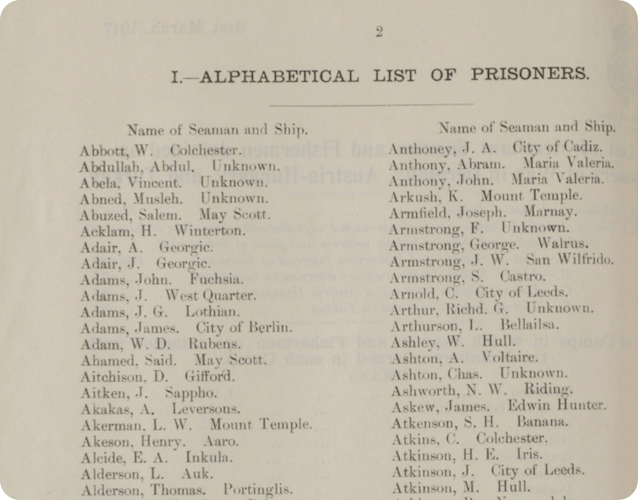
British Prisoners of War held in Bulgaria, 1917. Explore this record.
From all across the British Empire and beyond, we have over 51 million military and conflict records available for you to explore. Whether you've got roots in Britain, the United States, Australia, New Zealand or further afield, tracing the lives of the military heroes within your family has never been easier.
For that much-needed context, why not delve into our History Hub? From the military in the 1921 Census to the Royal Navy during World War 1, there are so many fascinating stories to discover.
FAQs
Is there a POW database?
Our partners The National Archives have a wealth of information about soldiers who were interned in POW camps during both World War 1 and World War 2. You may wish to consult their handy research guide before delving into the detail-rich POW records on Findmypast.
What happened to prisoners of war in WWI?
Germany instituted a prisoner-of-war camp system from 1915. At its peak, there were around 300 German camps. Over the course of the war, over 7 million prisoners were taken - approximately 2.4 million of these soldiers were imprisoned in Germany.
How many POW died in WWI?
It's hard to pinpoint a single figure for POW deaths, though the poor conditions, forced labour and rampant illness due to unsanitary conditions made World War 1's prisoner camps deadly for many. Prisoner of war death rates varied across different nationalities - around 1/6 of the 600,000 Italian prisoners captured by the Central Powers died, while Romanian prisoners in Germany had a death rate as high as 29%.
Can you trace WW1 medals?
If your ancestor was rewarded for their sacrifice during World War 1, you can find their name amongst our collection of military medal rolls. If you know their service number, even better - many of their army records may be easily accessible to you via Findmypast. Be sure to consult our expert guide to tracing WWI ancestors.
